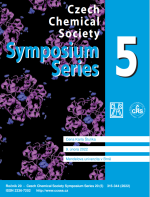Study of the Applicability of Colloidal Solutions of Gold and Silver Nanoparticles for Surface-enhanced Raman Spectroscopy of Blood Plasma
DOI:
https://doi.org/10.54779/ccsss20220327Keywords:
surface-enhanced Raman scattering, blood plasma, medical diagnosis, colloid substrate, riboflavinAbstract
This work focuses on the preparation of colloidal solutions of Au and Ag nanoparticles and verification of their applicability for surface-enhanced Raman scattering spectroscopy of blood plasma. The composition of blood plasma may change due to pathobiochemical processes associated with disease development. Analysis of blood plasma might reveal these changes and thus help in the diagnostics process of various diseases. Raman spectroscopy appears to be an ideal method for rapid and non-destructive analysis of blood plasma. Moreover, surface-enhanced Raman scattering spectroscopy might allow the detection of very low levels of potential disease-specific markers. In this work, the prepared colloidal solutions of Au and Ag nanoparticles were first characterized by UV‑VIS absorption spectroscopy and their enhancing capabilities were verified using riboflavin as a model analyte. Subsequently, optimization of the measurement conditions for surface-enhanced Raman spectroscopy of blood plasma was performed. The results show that at the excitation wavelength of 785 nm, significantly higher enhancement is achieved when using Ag nanoparticles. In the case of Au nanoparticles, the enhanced blood plasma spectrum was successfully detected only once, and the addition of an aggregating agent (NaCl) was required.




